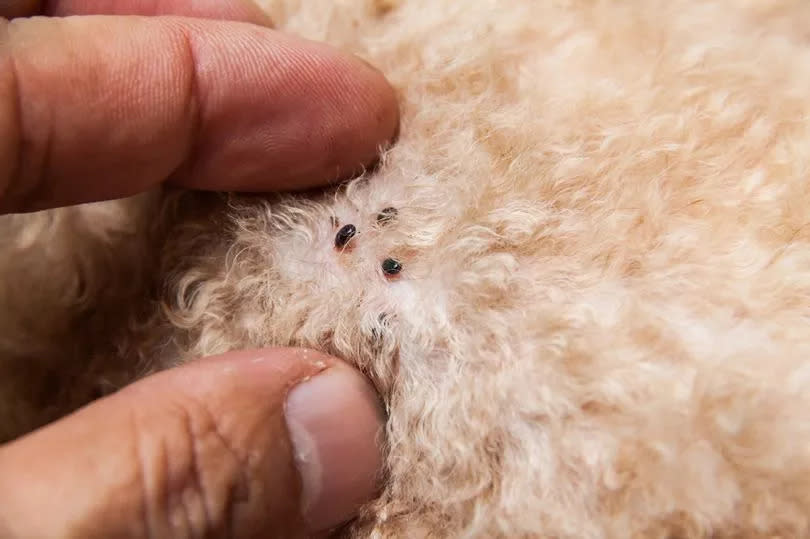Lyme disease in dogs: Symptoms to look out for and how to prevent it

Dog owners all over the UK are being urged to watch out for any symptoms of Lyme Disease, which can make pets chronically unwell if it's not treated in time.
Health experts at the UKHSA have warned that the warmer temperatures of spring are peak conditions for ticks to thrive - the pests that can carry Lyme disease and infect animals.
According to Public Health Scotland, there were approximately 529 cases of Lyme disease in Scotland in 2021, with experts warning that the problem could become worse due to climate change.
To help out owners who are concerned about their pets potentially picking up this illness whilst out for a walk, the veterinary team at Admiral Pet Insurance have issued some advice as the weather warms up.
The insurance company's in-house veterinary nurse, Nicki Fox, has put together a guide for pet owners which highlights exactly what Lyme disease is, what the symptoms are and how it can be prevented.
What is Lyme disease?
Lyme disease is caused by a bacteria found in ticks known as Borrelia, or 'Borreliosis', reports Bristol Live.
When a tick latches on, its saliva enters the bloodstream, allowing the bacteria to spread to various tissues and organs. The infected tick can remain attached for several hours to feed.
Like humans, dogs can contract the disease if bitten by an infected tick, although most dogs exposed to Lyme disease do not become ill. However, it's crucial to watch out for symptoms because if left untreated, Lyme disease can lead to chronic illness.
Symptoms of Lyme disease in dogs
While Lyme disease can present differently in each dog, some may not show any signs at all. It's also important to note that symptoms typically only appear between 25 months after the bite.
Some common signs to look out for in your dog include:.
Lameness: This results from inflammation of the joints and is one of the most recognised signs of Lyme Disease in dogs. This usually starts in the joints closest to the tick bite.
Fever: Your dog may also develop a fever, which can lead to loss of appetite.
Joint pain: If your dog shows signs of stiffness or joint pain, particularly during movement, it could be a symptom of Lyme Disease.
Swollen lymph nodes: You may notice that your dog's lymph nodes are enlarged, especially around the joints affected.
Depression: Changes in behaviour or signs of depression could indicate that your dog is infected.
Lethargy: An infected dog might become lethargic and sluggish due to the illness, resulting in a noticeable decrease in activity levels.
Reduced appetite: Keep an eye out for a significant reduction in your dog's appetite when they're unwell.
Increased drinking and urination: If your dog is drinking or urinating more than usual, this could be a sign of illness.

How to prevent ticks
The peak tick season typically falls in spring and summer, so vigilance during these months is key. Ticks are prevalent in wooded areas, forests and grasslands, so it can be beneficial to stick to clear paths during walks in these seasons.
If you have a garden, ensure it's well-maintained by keeping the grass short and removing leaf litter.
It's crucial to prevent tick bites in dogs as it reduces the risk of Lyme disease and other illnesses. You can use tick control products recommended and prescribed by your vet, such as topical treatments, collars or oral products. These can repel and kill ticks on your dogs if used correctly.
You should also regularly check your pet for ticks, especially after being outside. In severe cases, extensive testing and treatment may be required.
If you think your dog may have contracted Lyme disease, it's crucial to seek advice from your vet immediately. They can conduct necessary tests to confirm whether your pet has Lyme disease or another condition, and prescribe the appropriate treatment.
Join the Daily Record's WhatsApp community here and get the latest news sent straight to your messages.

 Yahoo News
Yahoo News 
